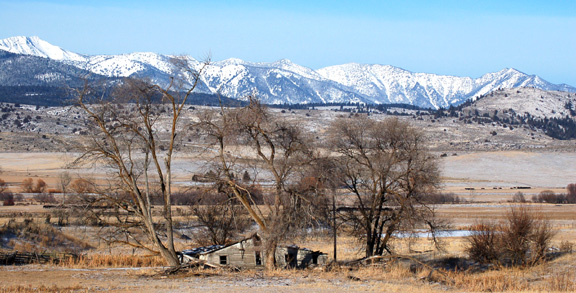- Max Simpson—Crusty Eastern Oregon Rancher Gives Sage Advice
- Environmental Groups File Suit Against Federal Wolf Management Actions in Oregon
- The War is Making You Poor Act
_______________
[This article came by way of Jason Bland.]
Max Simpson—Crusty Eastern Oregon Rancher Gives Sage Advice
[A True Baker County Conservative Counsels Accommodation of Differing Views]
Special Moments enliven this Special Session
Eugene Register Guard
June19, 1977
By Henny Willis
From article:
“Rep. Max Simpson, D-Baker, is a crusty Eastern Oregon Rancher. He is as conservative as they come, but his easy, folksy manner and his native wit and intelligence have earned him the respect—if not the votes—of all ideological factions.
Max Simpson didn’t like Frohnmayer’s legislative reform proposal. No surprise there. But, in opposing the measure, Simpson spoke in uncommonly eloquent terms of what he believes the [Oregon] House of representatives is and should remain. No matter his position on HJR 54, for the purpose here is to repeat Simpson’s comments as a soliloquy on his vision of the “House of Commons.” Said Max Simpson:
“I know most of you wouldn’t expect me to say what I’m going to say, but it has to do with the melting pot that this House represents. The people of this individualistic, evergreen state need the environmentalist, who feels that your rights end at the point of my nose. And it needs those who say your rights end at my property line. We need the preservationist and the coyote trapper.”
“We need those who see utilities and business per say as a lurking rapist. We need those who see these as something good and basic to our free enterprise system. We need the women and the humanist and those who want to protect people from themselves, even though the protection is rejected. We need the educator, the theorist, the anarchist, the farmer, the fisherman, the legal minds and writers. And we need those who have learned what will work, the hard way, through experience. We need this noisy, diverse, squabbling, and intense House of Representatives . . . because each of the viewpoints represents some degree of truth, and although the pendulum swings, it creates political balance.”
Nicely said, Max, Nicely said.
. . . .
__________
Environmental Groups File Suit Against Federal Wolf Management Actions in Oregon
For Immediate Release, July 1, 2010
[Note: All text in bold print is my emphasis.]
Josh Laughlin, Cascadia Wildlands, (541) 434-1463
Noah Greenwald, Center for Biological Diversity, (503) 484-7495
Greg Dyson, Hells Canyon Preservation Council, (541) 963-3950 x 22
Rob Klavins, Oregon Wild, (503) 283-6343 x 210
Lawsuit Filed to Stop Federal, State-sanctioned Killing of Endangered Wolves
PORTLAND, Ore.— Four conservation groups sued the U.S. Department of Agriculture’s predator control branch, Wildlife Services, today for its role in killing wolves at the behest of the Oregon Department of Fish and Wildlife (ODFW). The state has issued, and now extended to Aug. 31, a permit to the federal agency to hunt, track and kill two wolves across a 70-square-mile area in eastern Oregon. According to the conservation groups’ lawsuit, Wildlife Services never conducted the environmental analysis required to disclose the impacts of killing a substantial portion of Oregon’s wolves. Cascadia Wildlands, Hells Canyon Preservation Council, Oregon Wild and the national Center for Biological Diversity brought the suit, and are also strongly considering suing the state for its role in authorizing the kill permits.
“Oregon is big enough for people and wolves,” commented Greg Dyson with the La Grande-based group Hells Canyon Preservation Council. “ODFW is acting too hastily in giving Wildlife Services authority to shoot these wolves before exhausting other management options. We were left with no choice but to protect wolves in court.”
The kill order stems from recent livestock depredations by wolves in Wallowa County. In May and early June, six cattle deaths were confirmed as wolf depredations. For comparison, in 2005 — the year the wolf plan was created — domestic dogs killed 700 sheep and cows in Oregon, according to the National Agricultural Statistics Service. No new wolf depredations on livestock have occurred since June 4.
“Sixty years ago, we completed a sad chapter in our history by killing the last wolf in Oregon,” added Josh Laughlin of Cascadia Wildlands. “Today, we’re fighting in court to ensure that we do not repeat that history.”
According to the groups, Oregon’s wildlife agency is violating the wolf-management plan by issuing the kill permits when damage is not presently occurring, the wolves are not on the land where damage is occurring, and multiple carcass dump piles were left on ranch lands resulting in “unreasonable circumstances” that attract wolves to the area. Had Wildlife Services conducted the proper environmental analysis, the agency would have realized that wolves pose no current depredation threat and hunting them is inappropriate. The state’s wildlife department has also failed to document how efforts by ranchers to avoid depredations through nonlethal means were “deemed ineffective” or to document unsuccessful attempts to solve the situation through nonlethal means — both of which are requirements of the plan.
“Oregon’s struggling wolf population cannot sustain these killings,” said Noah Greenwald, endangered species program director at the Center for Biological Diversity. “Issuance of permits to kill these two wolves by the state of Oregon is exactly why wolves continue to need protection under the federal Endangered Species Act.”
A decision is expected soon in a separate lawsuit brought by a large coalition of conservation groups — including all the groups involved in today’s suit — seeking to restore federal protections to wolves under the Endangered Species Act. If protections are restored, the permits may be invalidated.
To date, Gov. Ted Kulongoski’s office has had little to say about the actions of his state’s wildlife agency. The governor’s Natural Resources Policy Director, Mike Carrier, stated publicly that the governor cannot respond to requests to remove the kill order.
“Is this what Governor Kulongoski wants his wildlife legacy to be?” asked Rob Klavins with Oregon Wild. “The governor who signed off on the first state-sanctioned illegal wolf kills in the state’s history?” [Rumor has it that Governor Kulongoski wants to retire to Baker County. A friend of the family owns the Geiser Grand Hotel. - Chris]
Oregon is currently home to a confirmed population of 14 wolves in two packs, both in northeast Oregon. The Imnaha pack of 10 is led by wolf B-300. Another pack of four wolves located in the Wenaha wildlife unit was caught on film for the first time earlier this spring. The Oregon wolf plan is currently undergoing a mandated five-year review process. Because the current population numbers fewer than 14 confirmed wolves, conservationists are working to fully fund the wolf plan and empower biologists to make decisions regarding the state-listed endangered species.
###
Please find HCPC Complaint Here.
__
Some Background:
MONDAY, APRIL 5, 2010
Wolves and Other Predators
__
SATURDAY, MAY 29, 2010
ODFW's Double Standards: Wolves, Ranchers, and Non-lethal Measures
__
MONDAY, MAY 31, 2010
Native Wolves in Wallowa--Human variety in the Middle East
__
ODFW authorizes lethal removal of wolves
Breeding pair to be protected May 31, 2010
Michelle Dennehy
To: Michelle Dennehy
Just distributed to news media
Oregon Department of Fish and Wildlife
Contact: Michelle Dennehy (503) 947-6022 / (503) 931-2748 Michelle.N.Dennehy@state.or.us
Fax: (503) 947-6009
Internet: www.dfw.state.or.us
For Immediate Release May 31, 2010
ODFW authorizes lethal removal of wolves
Breeding pair to be protected
ENTERPRISE, Ore.—ODFW is authorizing USDA Wildlife Services to kill two wolves from the Imnaha pack, which are responsible for five confirmed livestock losses in the past few weeks.
Wildlife Services has been authorized to kill only two uncollared wolves. This selective removal is meant to protect the alpha male and alpha female, Oregon’s only known breeding pair of wolves at this time. Protecting the collared wolves will also help ODFW, USDA Wildlife Services and ranchers continue to monitor wolf activity. (The alpha female was collared in July 2009 and the alpha male was collared in February 2010.)
ODFW confirmed two additional wolf-caused livestock kills in the upper Wallowa Valley area on Saturday, May 29. (The other three confirmations occurred May 6, May 21 and May 28.)
The lethal action is aimed at killing wolves that are showing an interest in livestock, not wolves simply in the area, and will be limited to an area where three of the confirmed livestock kills are clustered. Under the terms of the authorization, the wolves can be killed a) only within three miles of three clustered locations with confirmed livestock losses by wolves and b) only on privately-owned pasture currently inhabited by livestock. ODFW’s authorization will be valid until June 11, 2010.
Through these specific terms, ODFW aims to protect the breeding pair and the Imnaha pack’s den site, where the alpha female may be caring for new pups. (Wolf pups are typically born in mid-April, though ODFW has not visually observed any new pups this year.)
The authorization for lethal removal is consistent with the Oregon Wolf Conservation and Management Plan and associated Oregon Administrative Rules, which guide ODFW responses to livestock losses by wolves. After non-lethal measures have been used and there are two or more losses on adjacent properties, the department may authorize its own personnel or Wildlife Services to kill wolves.
The non-lethal measures tried include removal of livestock carcasses and bone piles that can attract wolves; radio telemetry monitoring of wolves; use of radio activated guard box; aerial hazing of wolves; the hiring of a wolf technician to haze wolves and monitor wolf activity nightly; and increased presence around livestock.
ODFW has also issued two additional “caught in the act” permits to the landowners with losses confirmed on Saturday, May 29. The permits give landowners the legal authority to shoot wolves “caught in the act” of biting, wounding or killing livestock. Last week, ODFW issued five of these permits.
The Wolf Plan, first adopted in 2005, is currently undergoing a five-year review. Ranchers, conservationists and others with comments about the process for responding to livestock losses or other issues may provide public comment.
To comment, please send an email to ODFW.Comments@state.or.us. Comments received by June 30, 2010 will be considered for the draft evaluation, which will include any recommended changes to the plan. The draft evaluation should be available for preliminary review by the public in August. ODFW will present the results of the evaluation and any recommendations to amend the plan to the Fish and Wildlife Commission (the state’s policy making body for fish and wildlife issues) at their Oct. 1 meeting in Bend.
For more information on wolves in Oregon, visit
http://www.dfw.state.or.us/wolves/
__
update on wolves
3 messages
Michelle Dennehy
To: Michelle Dennehy
June 29, 2010 - ODFW filed a temporary rule change with the Secretary of State’s office today that changes the OAR language guiding lethal responses to wolf-livestock depredation. The rule changes are as follows (old or deleted language is strike-thru text, new language is bold and underlined). The new rule is available on ODFW’s website at the link below:
http://www.dfw.state.or.us/OARs/110.pdf
(6) Lethal take to deal with chronic depredation.
(a) ODFW may authorize its personnel, authorized agents, or Wildlife Services, to use lethal force on wolves [anywhere] at a property owner or permittee’s request if:
(A) ODFW confirms [that the property or an adjacent property has had] either:
(i) two confirmed depredations by wolves on livestock in the area; or
(ii) one confirmed depredation followed by [up to three] an attempted depredation[s] (testing or stalking) in the area ;
Wolves are territorial animals that can range over hundreds of square miles. Recognizing that wolves do not observe property boundaries, the new rules clarify that ODFW can authorize lethal force against wolves when they are repeatedly attacking livestock within an area. (Lethal measures can still only be taken after non-lethal measures have been unsuccessful and where no unreasonable conditions exist to cause wolf-livestock conflict.)
Adding the term “in the area” to i and ii clarifies that the rules are to be used for a situation in a particular area, not throughout the state. Replacing “up to three” with “an” does not change the intent of the rule but accounts for situations where there are more than three attempted depredations.
Under state law, ODFW may adopt a temporary rule which the Fish and Wildlife Commission needs to ratify at its next meeting (July 16, 2010 in Salem). Temporary rules are in effect for 180 days from the time they are filed with the Secretary of State.
Michelle Dennehy
Wildlife Programs Communications Coordinator
Oregon Department of Fish and Wildlife
3406 Cherry Avenue NE
Salem, OR 97303
http://www.dfw.state.or.us/
tel. 503 947 6022
cell 503 931 2748
email: Michelle.N.Dennehy@state.or.us
____________________________
Christopher Christie
To: Michelle Dennehy
Michelle,
I don't understand the rule change as your press release does.
It says:
"Adding the term “in the area” to i and ii clarifies that the rules are to be used for a situation in a particular area, not throughout the state. Replacing “up to three” with “an” does not change the intent of the rule but accounts for situations where there are more than three attempted depredations."
But the temporary rule says:
"(a) ODFW may authorize its personnel, authorized agents, or Wildlife Services, to use lethal force on wolves [anywhere] at a property owner or permittee’s request if:
(A) ODFW confirms [that the property or an adjacent property has had] either:
(i) two confirmed depredations by wolves on livestock in the area; or
(ii) one confirmed depredation followed by [up to three] an attempted depredation[s] (testing or stalking) in the area ;"
It seems to me that ODFW has expanded the area to be considered for depredations from on "the property or an adjacent property" to an undefined area beyond "the property or an adjacent property"--there was never any language that I can find in the press release about "throughout the state." The current rule is about depredations/attempted depredations on "the property or an adjacent property," not about depredations hundreds of mile away, say in Jackson County.
Granted, "up to three" is not specific, in my mind at least, as to the number of " attempted depredation[s] (testing or stalking)" necessary to trigger lethal force as the explicit "an," which I read as one, but I see no wording in the new language that justifies the press release statement that “an” does not change the intent of the rule but accounts for situations where there are more than three attempted depredations." It looks like ODFW would like to say "at least one" instead of [up to three]
My main point is that the statement
"Adding the term “in the area” to i and ii clarifies that the rules are to be used for a situation in a particular area, not throughout the state."
seems to misrepresent what is actually being achieved with the rule change, i.e., expanding the area to be considered for depredations or attempted depredations, which will no-doubt trigger increased killing of wolves. Given the new language that both expands the area to be considered for depredations or attempted depredations from the property and adjacent property to "the area," along with the replacement of "up to three" with "an," i.e., just one, I would like an explanation as to why I and others should not consider the press release to be both deceptive and a threat to wolf reintroduction.
Also, could you clarify on this point;
"Under state law, ODFW may adopt a temporary rule which the Fish and Wildlife Commission needs to ratify at its next meeting (July 16, 2010 in Salem). Temporary rules are in effect for 180 days from the time they are filed with the Secretary of State."
Are you saying that the temporary rule will go into effect before or after the Commission ratifies the change? Are the temporary rules in effect after ratification or when ODFW suggests the change?
While I realize you do not routinely respond to my questions, I truly would like to understand the situation and would be grateful for a response on this one.
Thank you.
Christopher Christie
Baker City
[Quoted text hidden]
--
Chris
. . . .
Michelle Dennehy
To: Christopher Christie
“In the area” means in the area of the depredating wolves – e.g. their territory. The purpose is to be able to deal with the problem wolves where they are as opposed to some arbitrary line.
Say we have 40 to 50 depredations and we know it’s the same wolves but the losses are never adjacent. The rule change is so we can address the problem regardless of distance as long as we have information that it is these particular wolves. So it’s not a particular distance or an arbitrary property boundary. To use another example, say we have several depredations miles apart, and we are certain it’s the same wolves; this gives us ability to be in the area where the problem wolves are.
While people might want definable distances and boundaries for wolf situations, it’s not practical in this situation. The Imnaha pack are using a very large area – 327 square miles based on the data we have.
ODFW needs to be proactive and responsive in chronic livestock depredations situation and we determined that the rule did not allow us to be responsive on such as wide ranging pack. It is our responsibility to deal proactively with chronic livestock depredations where they occur (and to be prepared to deal with future situations, too).
We made the rule changes for the reasons described above and to make the language more clear. The Wolf Plan and our other wildlife management plans talk about the concept of adaptive management – when you perform actions based on a certain plan and there are problems, wildlife managers have a responsibility to make it workable, and that is why we did the rule change.
Temporary rules go into effect immediately once they are filed with the Secretary of State office. If the Commission chooses not to ratify the rule change at their July 16 meeting, it is no longer in effect.
__
Public Comment Period:
Wolf Plan - public process
1 message
Michelle Dennehy
To: Michelle Dennehy
The public comment period for the initial five year review of the Wolf Plan closed yesterday, but we will continue to accept public comment up through the Oct. 1 Commission meeting in Bend when formal rule making could occur. See below for the rundown of the public process; note there will be a briefing on the evaluation at the Sept. 2 Commission meeting in Hillsboro. This information will be on our wolf web page later today. - Michelle
Wolf Plan Evaluation: The Wolf Plan is due for its five-year review this year (2010). ODFW staff are currently working on the draft evaluation, which should be available for public review in August. Staff will present the draft evaluation to the Fish and Wildlife Commission during an informational briefing at the Sept. 2 meeting in Hillsboro. At the Oct. 1 meeting in Bend, the Commission will be asked to adopt the final amended plan, which could include rule changes.
ODFW will continue to accept public comments on the Wolf Plan up through Oct. 1, including in-person at the Sept. 2 and Oct. 1 Commission meetings. To comment, email ODFW.Comments@state.or.us
_________
The War is Making You Poor Act
On Democracy Now!
AMY GOODMAN:Congressman Conyers, what is the War is Making You Poor Act?
REP: JOHN CONYERS: The War is Making You Poor is a brilliant device by Grayson [Congressman, Florida, 8th District], my colleague Alan Grayson, in which we’re doing just three things. One, we limit the amount of funding of the wars in both countries. We eliminate the federal tax on all Americans that make less than $35,000 a year. And as a result, and this has been confirmed by the Joint Committee on taxation, we reduce the debt by almost $16 billion. Our debt. So it’s a combination of things that are happening now, Amy, that make it clear to more and more members of Congress that you can’t keep a straight face on all of this incredible indebtedness, talk about all of the money that we have shovelled out to Wall Street and credit isn’t loosening up, unemployment is still at all-time highs. We’re projected in Detroit to have more foreclosures on homes than last year. So we’ve got to turn with especially all of the shouts about being fiscally conservative, the way to climb out of this is to reduce the obligations of our government. Here we are in hundreds of billions of dollars of war debt and our President is saying we now have to have an emergency funding which is merely another way of saying we’re going to specially fund the Afghanistan surge. It makes no sense and I think militarily it is not logical and of course morally, I can’t remember anything like this since Korea and Vietnam, to be honest with you.
More:
The War Is Making You Poor Act
Grayson introduces ‘War Is Making You Poor Act’ to highlight cost of ongoing wars.












No comments:
Post a Comment